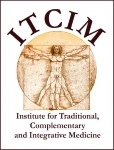
Dr Pannaga N Teragundi - India
Abstract of the presentation
The Alchemy of Responsibility: The Future of Rasashastra Use under the Minamata Convention
Co-authors: Anchoring author: Dr Namrata Joshi (Professor & Head, Department of Rasashastra, Faculty of Ayurveda, Institute of Medical Sciences, Benaras Hindu University, Varanasi); Second author: Dr. Bhaswati Bhattachary
Branch: Ayurveda (Rasashastra & Bhaishajya Kalpana (Pharmaceutics & Medicinal Chemistry))
The Minamata Convention on Mercury, led by the United Nations, was established to safeguard human health and the environment after the organic methyl mercury poisoning disaster in Minamata, Japan. This global treaty regulates the use and release of mercury across various sectors. India became a signatory and, since 2020, has implemented a prior informed consent (PIC) system to restrict mercury imports. Notably, the Convention permits the continued use of mercury in traditional systems like Ayurveda, Siddha, and Unani (ASU), under specified guidelines.
To align with international standards while preserving traditional practices, the Ministry of AYUSH has circulated UN guidelines on the safe handling of mercury, supplementing existing environmental laws. Many ASU pharmaceutical manufacturers now operate with Good Manufacturing Practices (GMP) and Good Laboratory Practices (GLP), ensuring safer processing and mercury waste management. However, smaller and local pharmacies often face challenges such as outdated infrastructure and a lack of full traceability of mercury from procurement to final product.
The classical Ayurvedic maxim — “Even the most dangerous poison, when used with wisdom and the right method, becomes a powerful medicine” — captures the essence of Rasashastra, where mercury is made pharmaceutically safe through elaborate purification (Shodhana) and transformation (Samskara) processes.
Looking ahead, novel solutions could strengthen this integration, such as publishing a Research Dossier on the safety and efficacy of mercury in Ayurveda backed by rigorous research, establishing a Government PIC Gateway for regulated mercury procurement, standardizing traditional processing protocols, enforcing mandatory certification for mercury handling, ensuring complete product traceability, and creating an exclusive, dedicated pharmacovigilance system to monitor mercurial products.
Rather than limiting traditional medicine, the Minamata Convention presents an opportunity. By blending ancient knowledge with modern safety protocols, India can lead in demonstrating the responsible and therapeutic use of mercury through the AYUSH ministry.
Please note that some of the texts also include machine-generated translations.





